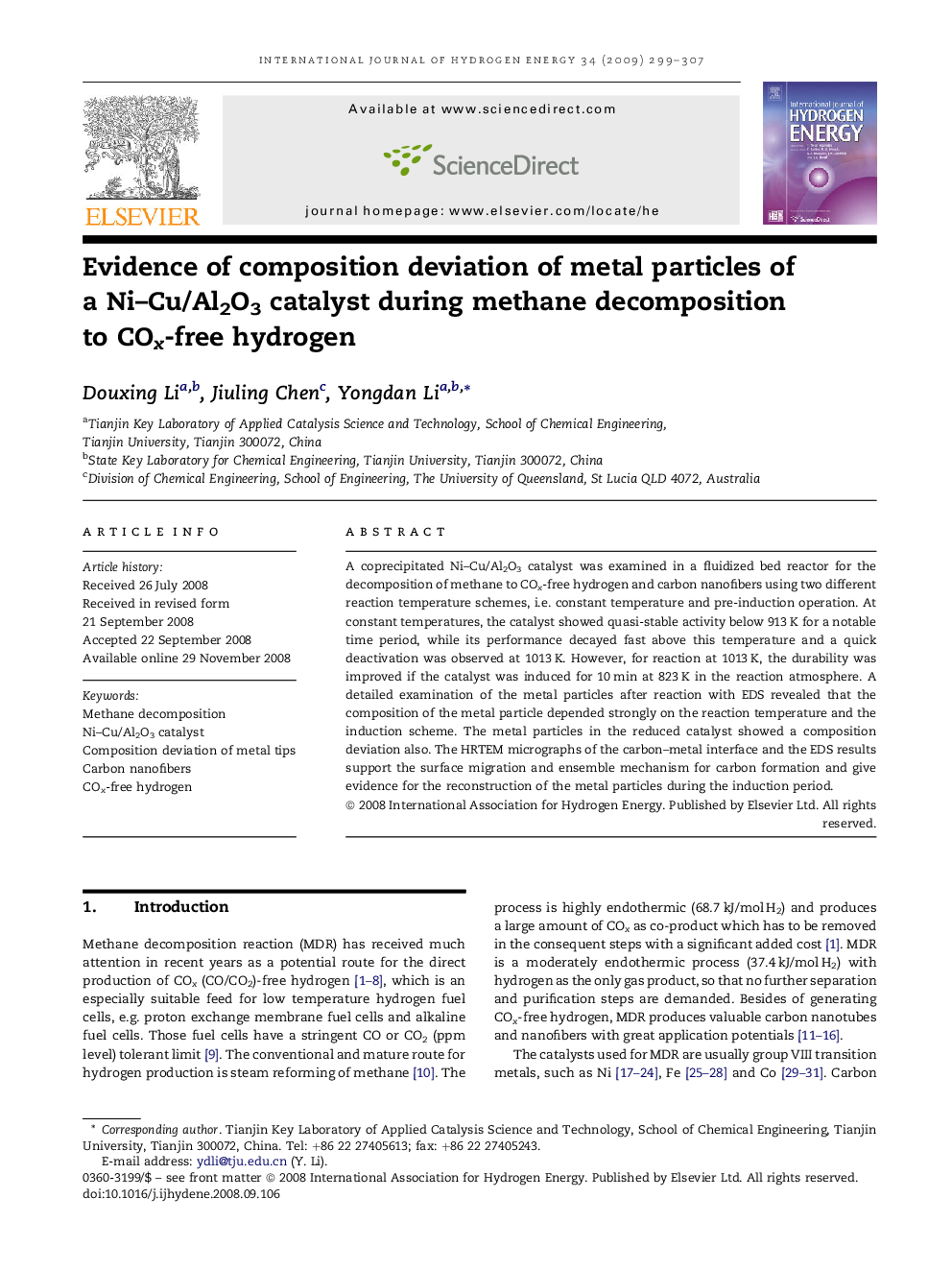| Article ID | Journal | Published Year | Pages | File Type |
|---|---|---|---|---|
| 1278075 | International Journal of Hydrogen Energy | 2009 | 9 Pages |
A coprecipitated Ni–Cu/Al2O3 catalyst was examined in a fluidized bed reactor for the decomposition of methane to COx-free hydrogen and carbon nanofibers using two different reaction temperature schemes, i.e. constant temperature and pre-induction operation. At constant temperatures, the catalyst showed quasi-stable activity below 913 K for a notable time period, while its performance decayed fast above this temperature and a quick deactivation was observed at 1013 K. However, for reaction at 1013 K, the durability was improved if the catalyst was induced for 10 min at 823 K in the reaction atmosphere. A detailed examination of the metal particles after reaction with EDS revealed that the composition of the metal particle depended strongly on the reaction temperature and the induction scheme. The metal particles in the reduced catalyst showed a composition deviation also. The HRTEM micrographs of the carbon–metal interface and the EDS results support the surface migration and ensemble mechanism for carbon formation and give evidence for the reconstruction of the metal particles during the induction period.
